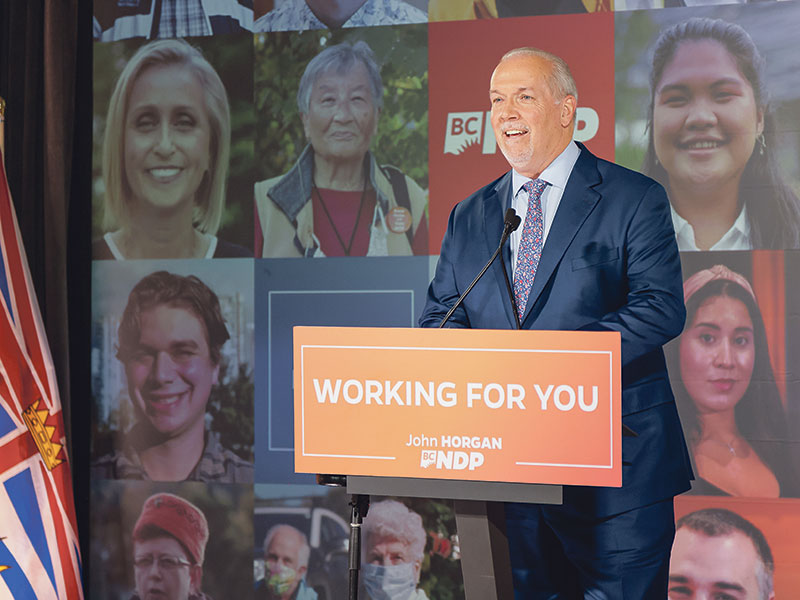
This article appears in the Mid-November 2020 issue of Investment Executive. Subscribe to the print edition, read the digital edition or read the articles online.
The smile on newly re-elected B.C. Premier John Horgan’s face shows that rolling the dice works best when the dice are already loaded in your favour.
Horgan’s rock-solid majority victory on Oct. 24 came after the incumbent NDP leader took what many saw as a gamble by calling the election a year early — and during the Covid-19 pandemic.
But Horgan wasn’t taking as big a risk as some might have thought.
His previous minority government had turned in a praiseworthy performance while managing Covid-19 and, based on positive poll numbers, he took a calculated risk that many voters would seek stability during a pandemic and stand by the NDP.
And that’s what voters did, in spades — especially in Metro Vancouver, where the previously powerful B.C. Liberals were thrashed.
The NDP captured 57 seats, with one seat under recount at press time. That’s 16 more seats than the party won in 2017.
The Liberals, under new leader Andrew Wilkinson, fell by 13 seats to net 28 — their worst showing since 1991. The B.C. Greens, led by new leader Sonia Furstenau, fell to two seats from the three that enabled them to prop up Horgan’s minority government in 2017.
In fact, the NDP prevailed even though Horgan broke a pact with the Greens not to drop a writ until 2021.
Wilkinson, meanwhile, will resign once the B.C. Liberal party chooses a new leader. The party also will consider a name change. Most important, the Liberals must take a long look at their role as B.C.’s big-tent Liberal-Conservative coalition. Perhaps a shift toward centre-left is warranted?
As the B.C. Liberals look inward, Horgan’s NDP must look outward, because now they’re solely responsible for running the province. Their solid majority presents a free hand, but also significant challenges.
First, a new cabinet is required. Seven former ministers did not run again, including the finance minister. Fortunately, there are fresh backbenchers to choose from, and three new MLAs — Nathan Cullen, Fin Donnelly and Murray Rankin — are experienced former MPs.
Beyond that, the battle against Covid-19 continues. Horgan will have to contend with a damaged economy and an estimated $14-billion deficit. He must also confront hefty campaign promises, such as paying eligible families a pandemic benefit of $1,000 each, extending the Skytrain from Surrey to Langley, erecting a new bridge or tunnel across the Fraser River and establishing that still elusive $10/day childcare — all while protecting health care and education.
Another challenge is the partially built Site C hydroelectric dam in northeastern B.C. The public learned in July that there are serious geological weaknesses below the sites for the powerhouse and Peace River diversion tunnels.
During Horgan’s first term, he decided to complete the $12-billion megaproject that the previous Liberal government had launched in 2015. The new geological problems could boost costs to $14 billion or more. Scrapping and reclaiming costs would total about $4 billion. Horgan launched a special study on Site C’s future just before the 2020 election; the report is due in late November or early December.
If Horgan chooses to complete Site C and save thousands of construction jobs, he will alienate the NDP’s powerful environmentalist wing. But scrapping the project would put a serious dent in B.C.’s badly needed economic recovery.
Canada must modernize financial legislation
Opinion: Failure to adapt risks leaving the nation behind